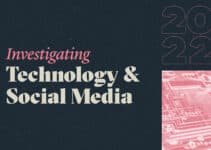Pest control has long been a challenge for homeowners, businesses, and governments around the world. Pests such as rodents, insects, and other animals can cause significant damage to property and pose health risks to humans and animals.
You Might Be Interested In
Paul Kibo, C.E.O. of Agile Pest Control Company says “Traditional pest control methods such as chemical treatments and physical barriers are effective, but often have negative environmental impacts and can be harmful to non-target species”. In recent years, various new technologies have emerged that offer more targeted, eco-friendly, and effective pest control methods. These technologies include CRISPR-based gene drive technology, electronic monitoring, thermal imaging, electronic and intelligent rodent bait stations, ultrasonic pest control, drones, and many more.
CRISPR-based gene drive technology
This technology could be the ultimate solution for malaria in Africa. It allows scientists to genetically modify a pest species so that the modified genes are passed down to future generations at a higher rate than normal, ultimately reducing or eliminating the pest population.
The idea behind CRISPR-based gene drives is that once a genetically modified pest is released into a wild population, it will mate with wild pests, passing on the modified genes to its offspring. Over time, the frequency of the modified genes in the population will increase until it reaches a level where the pest population is no longer viable.
A gene drive technology that targets mosquitoes that transmit malaria exists and several countries in Africa are already using it. To exterminate mosquito populations, an artificial gene is introduced into the population. The gene disrupts reproduction by knocking out female fertility genes such that the females can no longer lay eggs. The introduced artificial gene also distorts sex chromosome inheritance such that most offspring are males. In East Africa, Uganda, and Tanzania have adopted the technology. The technology is at the advocacy stage in Kenya before being approved for use.
Electronic monitoring
Electronic monitoring has revolutionized the way pest control professionals detect and control pests. This technology utilizes sensors, cameras, and other electronic devices to detect, track, and analyze pest activity. For example, remote monitoring involves the use of cameras and sensors to remotely track and monitor pest activity in a specific location. Automated traps are programmed to detect pests and trigger an alarm when a pest is caught, allowing for quick removal without the need for manual checks. Insect detection systems use light or pheromone attractants to lure pests into a trap, triggering an alert to pest control professionals who can take necessary action. Additionally, temperature monitoring technology can identify areas that are conducive to pest infestations.
Thermal imaging
Thermal imaging technology has become an important tool in pest control, providing a non-invasive and accurate method for detecting pest infestations. This technology works by detecting temperature differences, allowing pest control professionals to identify areas of a building or structure where pests may be hiding.
Thermal imaging cameras can detect the heat signatures of pests, such as rodents and insects, even in hard-to-reach areas such as wall voids and attics. By identifying these areas, pest control professionals can take targeted action to control or eliminate the pest population.
Thermal imaging technology can also be used to detect other issues that may contribute to pest infestations, such as moisture problems or gaps in insulation. These issues can create the ideal environment for pests to thrive, so identifying and addressing them can help prevent future pest infestations.
Thermal imaging technology in pest control is non-invasive. Unlike traditional pest control methods, which may involve drilling holes or tearing down walls to access pests, thermal imaging allows pest control professionals to detect pests without causing damage to the structure.
Electronic and intelligent rodent bait stations
Electronic and intelligent rodent bait stations are an advanced form of pest control technology designed to increase rodent control’s effectiveness and efficiency. These bait stations use sensors and electronics to detect and control rodent infestations in a more targeted and precise manner.
Electronic bait stations use sensors to detect the presence of rodents, triggering the release of bait or trap. This targeted approach ensures that only the targeted pests are affected, reducing the risk of unintended harm to non-target animals. Electronic bait stations can also alert pest control professionals to the need for servicing or bait replenishment, improving the overall effectiveness of rodent control efforts.
Intelligent rodent bait stations take this technology one step further by using artificial intelligence (AI) to track rodent behaviour and patterns. These stations can analyze data on rodent activity and use this information to adjust bait and trap placement for maximum effectiveness. They can also alert pest control professionals to the need for immediate action if unusual rodent behaviour is detected.
Electronic and intelligent rodent bait stations are tamper-resistant, making them safe for use in public spaces. These bait stations can be secured with electronic locks or other anti-tampering measures, reducing the risk of accidental exposure to bait or other hazardous materials.
Ultrasonic pest control
This is a technology that uses high-frequency sound waves to repel or eliminate pests. These sound waves are designed to be inaudible to humans and non-target animals but are believed to be uncomfortable or intolerable to pests such as rodents and insects.
Ultrasonic pest control devices are typically small, battery-powered devices that emit ultrasonic waves at regular intervals. They can be placed in areas where pests are likely to be present, such as kitchens, garages, or attics. The idea is that these devices will create an environment that is uncomfortable for pests, causing them to leave the area.
Drones
Drones are becoming an increasingly important tool in pest control. They are equipped with cameras and sensors that can capture detailed images of crops, allowing for the early detection of pest infestations. Farmers and pest control professionals can then take necessary action to prevent the spread of pests, reducing the use of pesticides and minimizing crop damage. Drones can be used to monitor and control pests in hard-to-reach areas such as rooftops, bridges, and power lines. This reduces the need for workers to access these areas manually, reducing the risk of injury and increasing safety. In Addition to that, drones can also be used for targeted spraying of pesticides, reducing the amount of chemicals needed to control pests. This targeted approach can reduce the environmental impact of pesticide use and improve the efficiency of pest control operations.
The emergence of new pest control technologies has opened up exciting possibilities for more effective, eco-friendly, and targeted approaches to pest management. These technologies offer advantages such as improved monitoring, more precise targeting, and reduced reliance on chemical treatments. However, it is important to carefully consider the ethical and safety implications of these technologies and to ensure that they are used responsibly and following best practices. As we continue to develop and refine these technologies, they have the potential to play an increasingly important role in managing pest populations and creating a healthier, safer environment for humans and animals alike.
You Might Be Interested In
Related
Val Lukhanyu
I cover technology news, startups, business and gadget reviews


